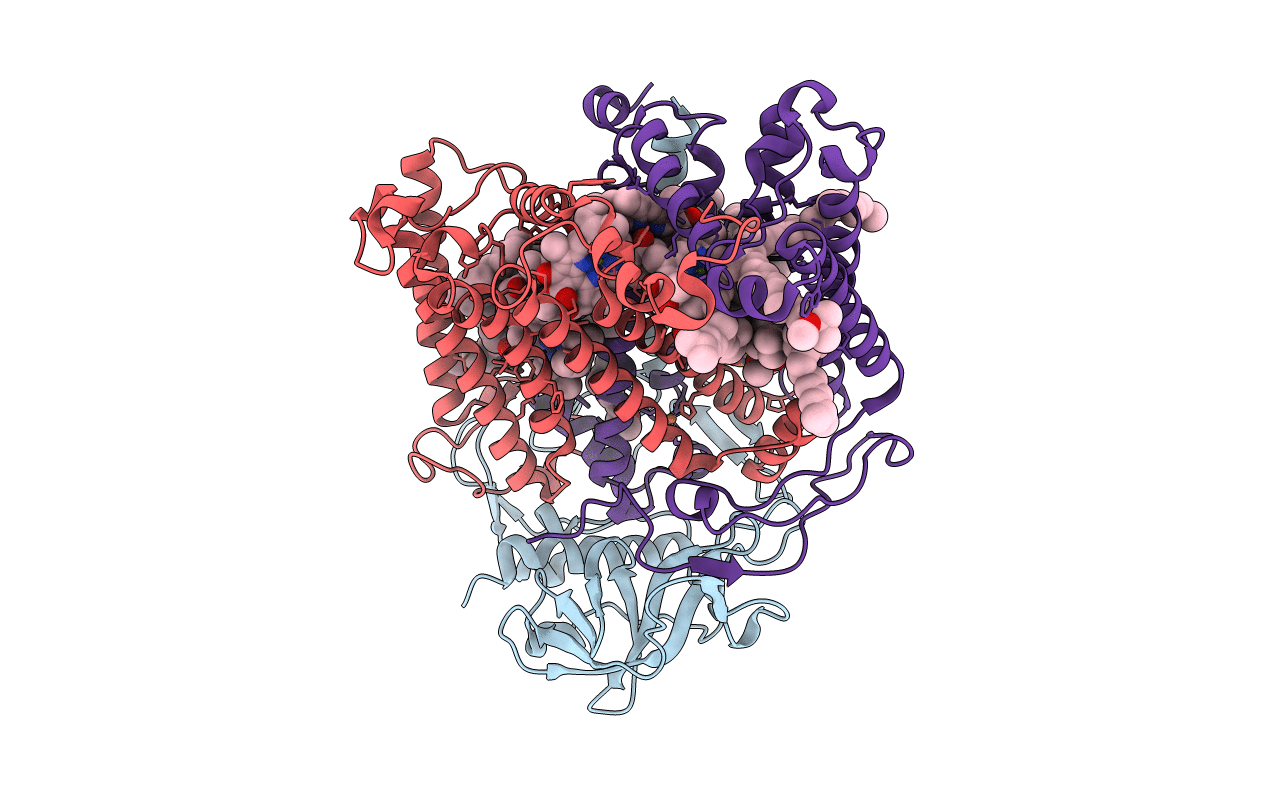
Deposition Date
2001-06-27
Release Date
2001-09-05
Last Version Date
2023-08-16
Entry Detail
PDB ID:
1JGZ
Keywords:
Title:
Photosynthetic Reaction Center Mutant With Tyr M 76 Replaced With Lys
Biological Source:
Source Organism:
Rhodobacter sphaeroides (Taxon ID: 1063)
Host Organism:
Method Details:
Experimental Method:
Resolution:
2.70 Å
R-Value Free:
0.24
R-Value Work:
0.21
Space Group:
P 31 2 1


